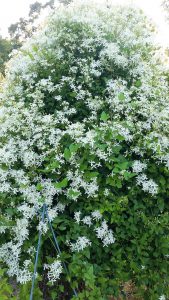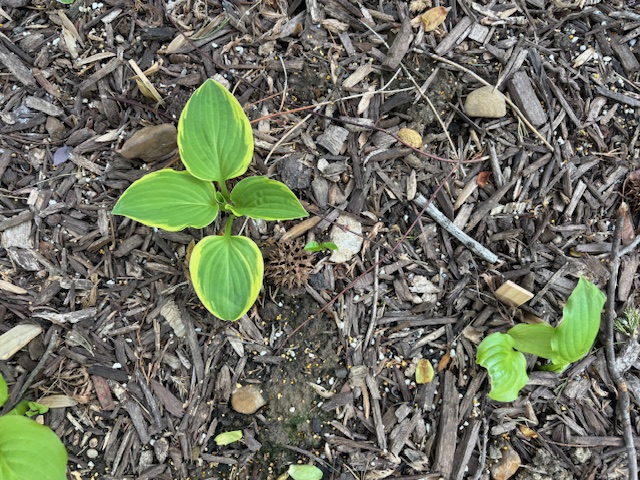One Tough Virgin: Virgin’s Bower
Views: 9168

I was chatting with a friend a few days ago and she was planning on moving some perennials because “they just weren’t doing well”. She thought she’d put them in too much shade. I have years, decades even, experience in planting plants in the wrong place. I keep on buying and planting sun lovers in the shade. Plants that need good drainage in the heavy clay that passes for soil around here. Even planting them too close to one another because I bought WAY more than I have room to plant. Yes, I’m guilty of plant torture. Luckily, Virgin’s Bower can take it.
Virgin’s Bower
Clematis virginiana may be one perennial that can withstand my well-meaning torture tactics. It’s also known as Woodbine, Virgin’s Bower, Old Man’s Beard, Devil’s Darning Needle, Devil’s Hair, Love Vine, Traveler’s Joy and Prairie Smoke on a Rope (gotta love that last one!). This deciduous vine is native to the eastern two-thirds of North America. It’s hardy in Zones 3 through 8, grows in part shade to full sun, tolerates a range of soil conditions (even my heavy clay) and moisture levels from wet to medium.
When I first saw it, I thought “Oops! Poison ivy!” NOT! It does have “leaves of three” (actually 3 to 5 leaflets). However, the Virgin’s Bower leaflets are opposite instead of alternate and the seed heads, if they are present, will reassure you that it isn’t P.I.
The Pros
It’s a beautiful vine; sometime between July through October (depending on its location). It’s covered in tiny creamy white flowers, a pollinator magnet. Although if it has a scent, it’s not noticeable to us humans. The seed heads remind me of Albert Einstein’s hair – all white and fluffy. They remain on the vine providing winter interest. It’s an aggressive grower. It can achieve twenty feet or more in height, quickly overpowering a space or neighboring plants. However, it does provide good bird and wildlife habitat. Plant somewhere that you can mow around it to keep it from spreading by runners.
If you’ve got a somewhat shady, moist area that doesn’t grow most plants well or you need to screen a less than pretty view, this native go-getter could be a good choice. There are several native plant garden catalogs which offer it.
There is a “dark side” though – it’s toxic – so don’t eat it! Be prepared to either let this vine grow and grow or regularly prune it back severely. When you do handle it, wear gloves and long sleeves because some people are sensitive to it – experiencing itchy rash and swollen eyes – so don’t find out you’re allergic to it the hard way.
Meet Dona Bergman
Dona Bergman is a founding member, Southwest Indiana Chapter of the Indiana Native Plant & Wildlife Society, and an Advanced Master Gardener.







